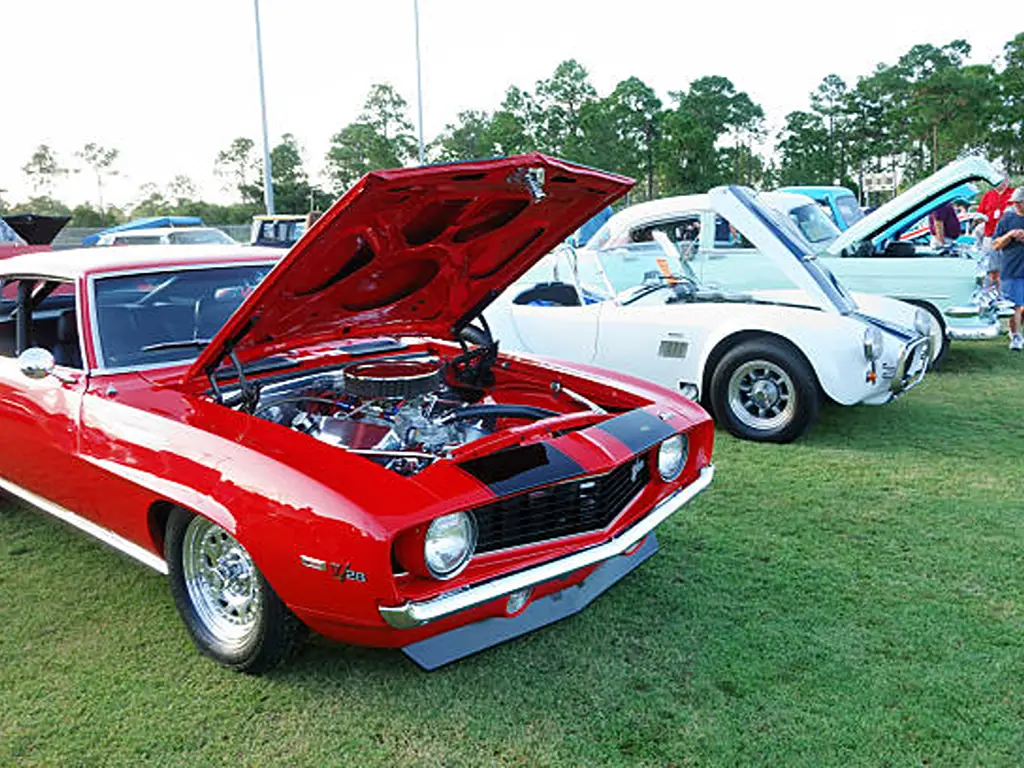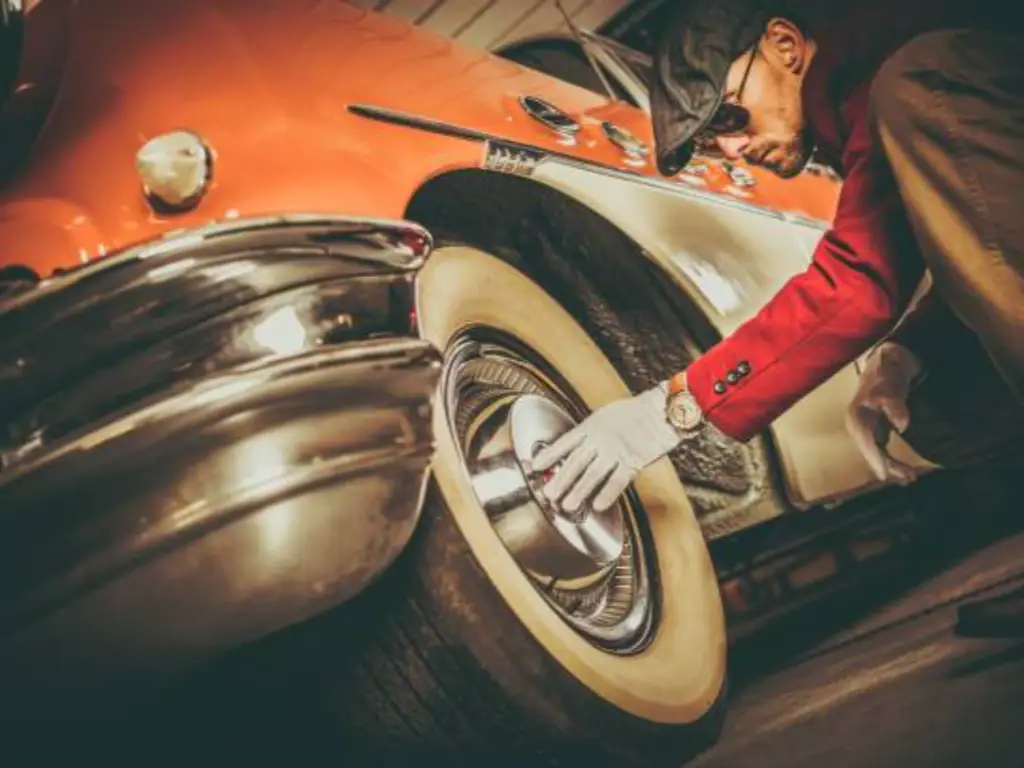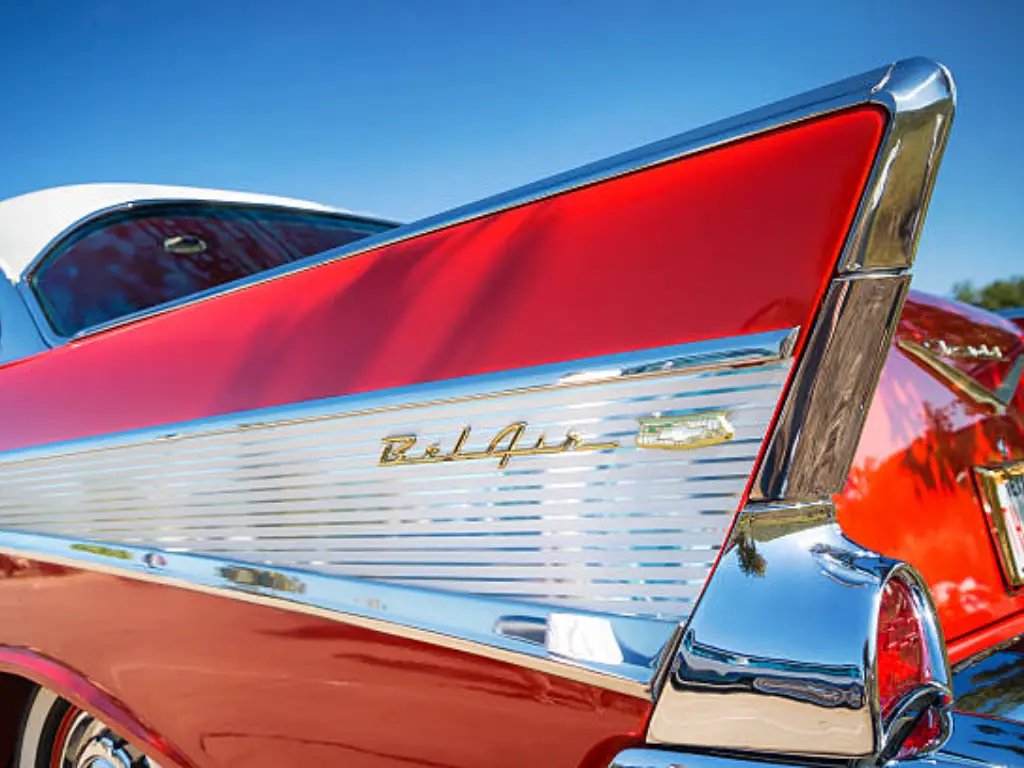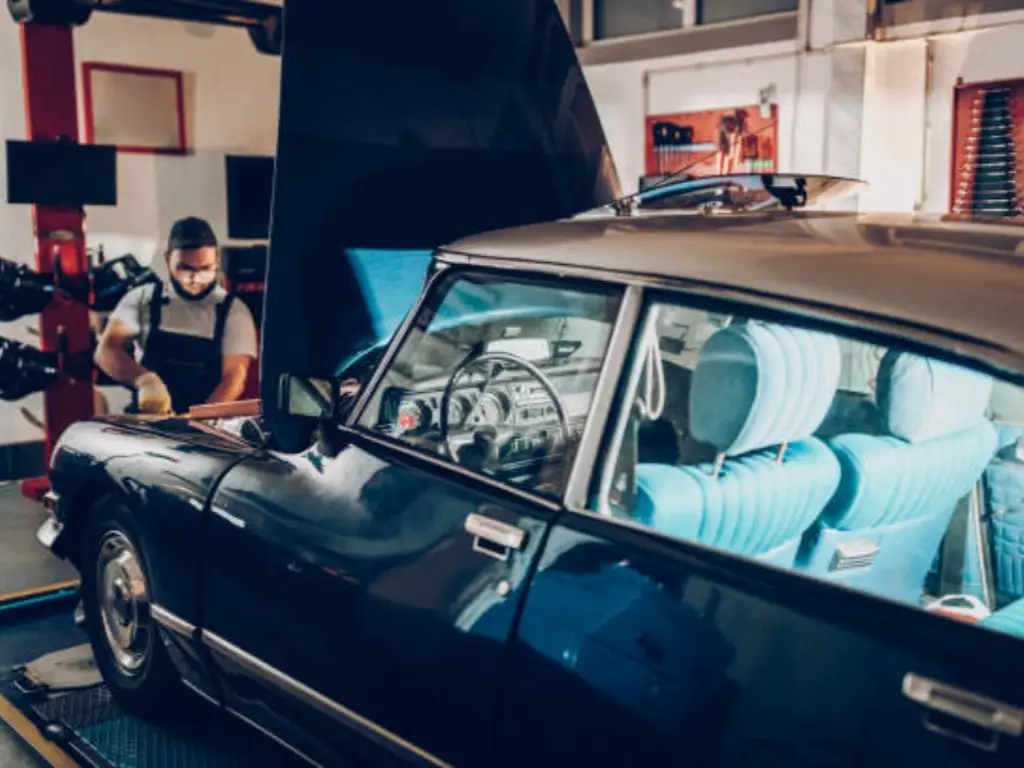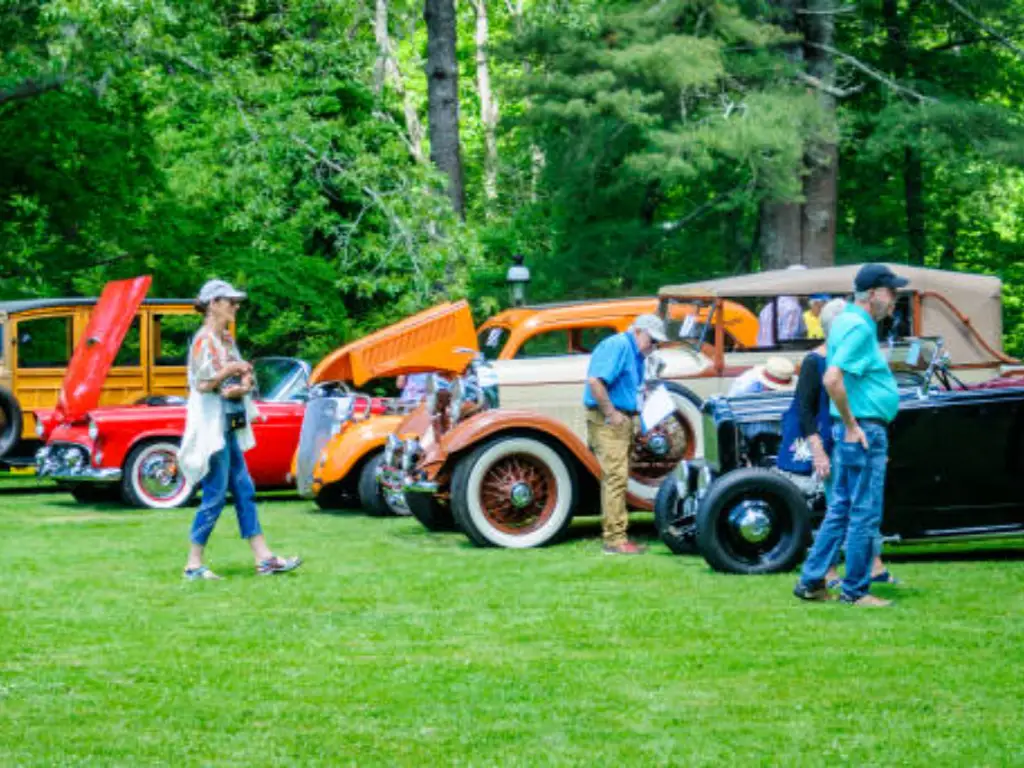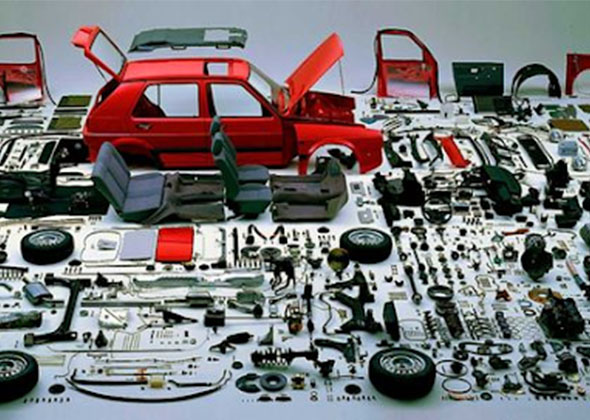Once upon a time, the gasoline was cheap, the open road was synonymous with freedom and the king was the horsepower. This was the heyday of the American muscle car, a purely American culture that was a result of the optimism and industrial strength of the 1960s and the early 1970s. At the center of this automotive revolution stood the Ford Motor Company, seeking, with its mantra of “Total Performance” in hand, to launch a fleet of V8-powered beasts that would decimate down the quarter-mile stripe, dominate road-racing circuits, and win the dreams of the nation.
These were not just cars but statements. They were rolling thunder, a raw, gut-churning combination of raw power, tasty style, and ability that was not too difficult to access. Whether it was the drag-strip centred horrors, or the sleek street fighters such as the legendary Mustang coupe, Ford’s creations were front-runners in the power battles. To honor that period, this article will detail the eight best Ford muscle cars, ones that not only took part in history but also wrote it.
What Forged the Golden Age of Ford Muscle?
The muscle car era did not come out in a vacuum. It was an ideal combination of culture and economic forces. The generation of Baby Boomers was growing up, and it had money to spend, which were yearning to be entertained. The interstate highway system had integrated the nation, so the automobile was more than a form of transportation; it was a projection of the self.
Ford was squaring off against the stiff competition of the Pontiac GTO and Chevelle cars by Chevrolet, and Ford decided that it had to go beyond the assembly of family sedans. In the early 1960s, the company instituted the Total Performance program, a top-down approach to declaring war on every corner of motorsport, Le Mans to NASCAR to the local drag strip. This horse’s pedigree trickled all the way down into the showroom floor. The principle was straightforward but amazingly effective: place a certain-sized production car, load it down with as much power as possible, and remove most of the luxuries. The outcome was a cultural artefact- the American muscle car, which led to a series of models that would eventually be adulated as the old Ford muscle cars, by collectors and enthusiasts.
Ford Muscle Cars: Power and Performance Unleashed
Although the Mustang is the name most immediately to mind, the muscle legacy of Ford is much deeper and wider. These eight are some of the best the Ford machine ever created, often included in any serious Ford muscle cars list; they are the epitome of Ford engineering, culture, and brute, untouched power.
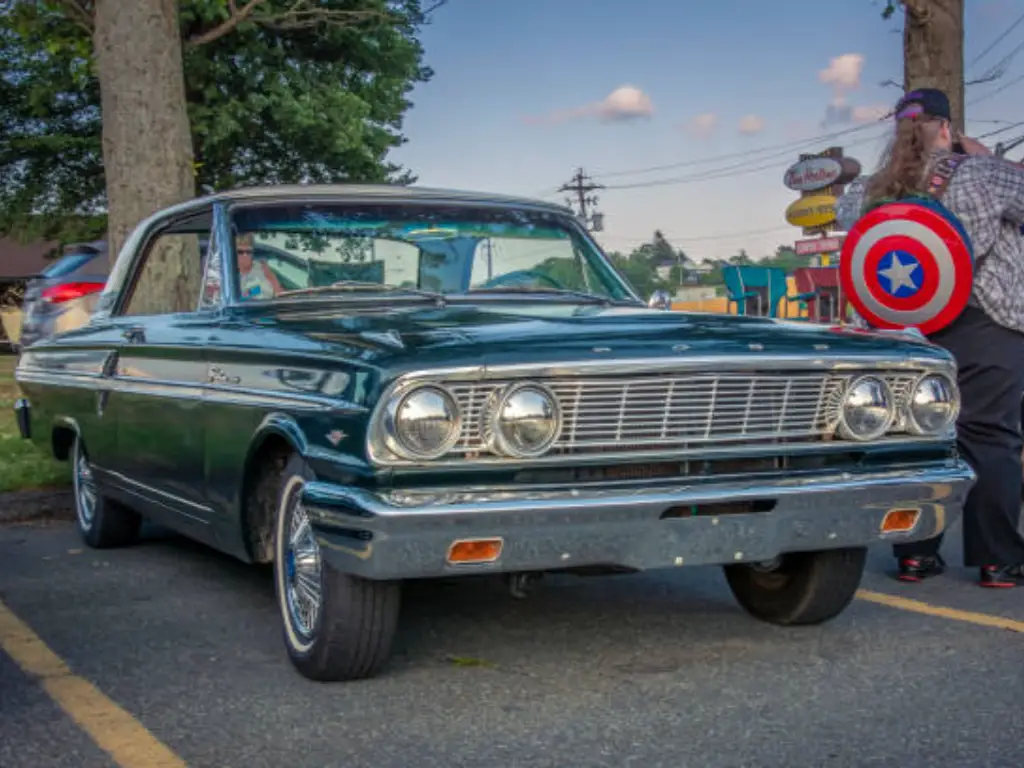
#1 – 1964 Ford Fairlane Thunderbolt
Ford created a monster before the so-called muscle car was even in popular use. The Fairlane Thunderbolt was not a car that just had a performance package; it was a drag race car in factory-built form, with typical modifying as an afterthought. Ford commissioned them, and Dearborn Steel Tubing manufactured them in very low numbers of approximately 100. The task was uncomplicated: to rule in the NHRA Super Stock category.
To do so, Ford decided to subject its mid-size Fairlane to an extreme diet, stripped off the hood, fenders, and bumpers, and onto a thin layer of lightweight fiberglass. Its interior was beaten to the bare bones, and it had bucket seats that belonged in a Ford Econoline van and a distinct lack of a radio, heater, and even a sun visor on the passenger side. The beast was under the carpet, which was the massive tear-drop hood scoop: a 427 cubic inch (7.0L) V8 with twin-four barrel carburetors, rated at 425 horsepower officially, but calculating the actual power at more than 500 hp in real-life conditions. The Thunderbolt was a wheeled sledgehammer that was low-11s on the quarter-mile–still blisteringly fast by any standards nowadays. It remains one of the purest factory drag racers of old school Ford muscle cars.
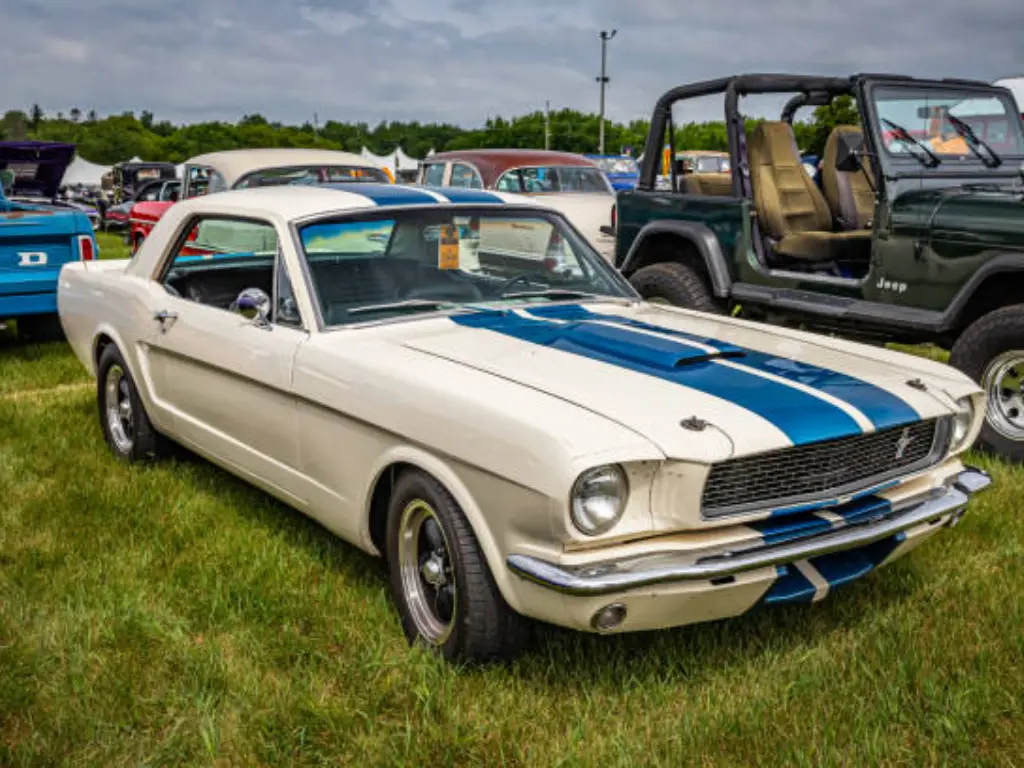
#2 – 1965 Shelby GT350
Where the Thunderbolt would hulk like a sledgehammer, the Shelby GT350 was dainty like a rapier. Ford had the idea to undo the stylish, slick “pony car” that they created in the form of the Mustang, and turn it into a serious performer. Ford called upon a one-man team, and that man was Carroll Shelby. The outcome was the GT350, a car that took Mustang to legendary heights.
Shelby used a conventional K-Code Mustang fastback and “re-engineered it in a methodical fashion, track-wise.” The 289 cu in (4.7L) V8 received an increased carburetor and high-performance exhaust headers and bumped power to 306 horsepower (228 kW). Its suspension was extensively upgraded, its rear seat was removed in favor of a fiberglass shelf so as to classify it as a “two-seater sports car” in SCCA racing, and it came in only one color: Wimbledon White with Guardsman Blue stripes. An immediate success, the GT350 had an overwhelming presence in SCCA competition and demonstrated that Americans could build cars capable of handling corners as well as the drag strip.
#3 – 1968 Ford Mustang GT “Bullitt”
There are famous cars and then there are famous cars, famous due to race wins and other cars, and to cultural influence. A 10-minute car chase in the streets of San Francisco helped the 1968 Mustang GT fastback earn itself a place in immortality. The actor Steve McQueen, owner of a Highland Green Mustang GT, in his movie Bullitt (1968), he starred in one of the most successful car pursuits in the history of motion pictures as the cool-vibe policeman Frank Bullitt pursued a Dodge Charger.
This list of cars would not be complete without the inclusion of the Bullitt Mustang, though it was not the most powerful car on the list, but some would consider it the coolest. It was propelled by a 390 cu in (6.4L) V8 providing 325 horsepower, which was debadged and bare of any emblems, giving it a subtle, threatening design. It exemplified the ultimate street machine–impressive, elegant, and it lacked the gaudy stripes and scoops of its day.
Its impact goes so far that Ford treasures it in several modern tribute editions and can guarantee that it is a cultural landmark.
#4 – 1969 Ford Mustang Boss 429
The Boss 429 is a legend born from necessity. To compete in NASCAR, Ford needed to homologate its new “Semi-Hemi” 429 V8 engine for production cars. The problem was that the massive engine wouldn’t fit in a standard Mustang. The solution required extensive modifications by Ford’s contractor, Kar Kraft, which had to widen the shock towers and alter the suspension just to cram the engine into the bay.
The result was one of the most revered and rarest Mustangs of all time, with only 859 produced in 1969. Like the Thunderbolt, its official 375-horsepower rating was famously underrated; true output was likely closer to 500 hp. The Boss 429 was a pure, no-nonsense performance car, identified by its massive, functional hood scoop. It wasn’t the best-handling Mustang, but for sheer engine presence and brute force, the “Boss 9” stands in a class of its own.
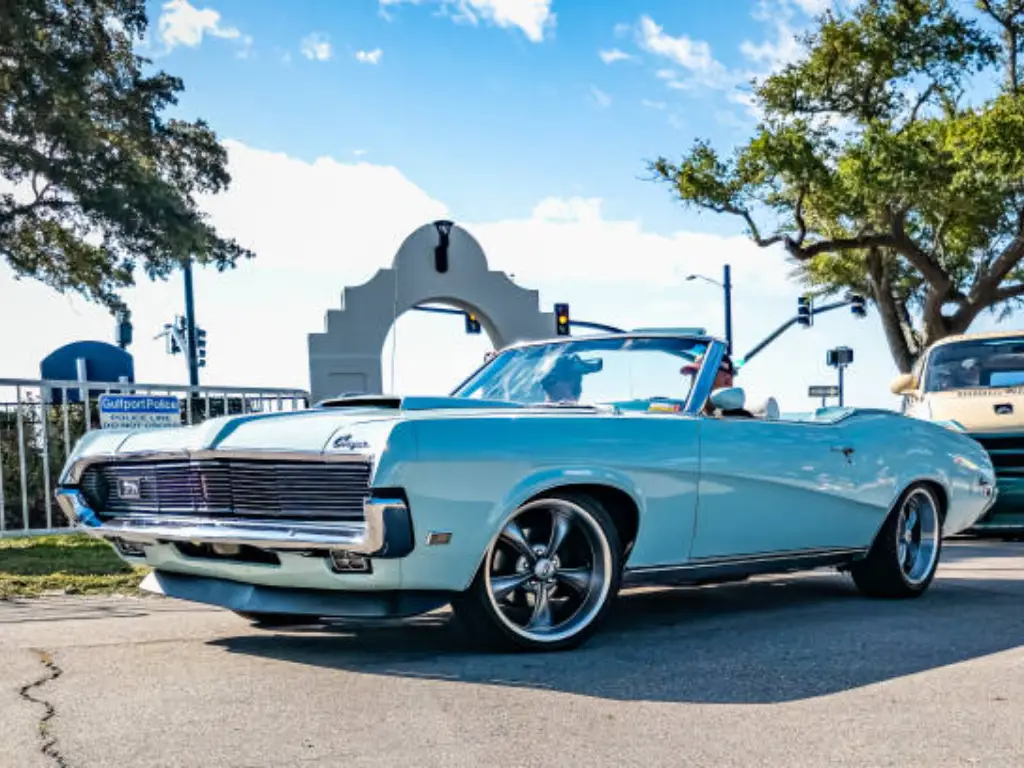
#5 – 1969 Mercury Cougar Eliminator 428 CJ
While technically a Mercury, the Cougar shared its platform with the Mustang and represented Ford’s effort to capture the more upscale end of the muscle market. The 1969 Cougar Eliminator with the 428 Cobra Jet engine was the ultimate expression of this idea: a perfect blend of European-inspired luxury and American brute force.
The Eliminator package added a front spoiler, a rear wing, and bold side stripes, but the real story was the 428 cu in (7.0L) Cobra Jet V8 under the hood. Officially rated at 335 horsepower, this figure was a deliberate understatement for insurance purposes, with actual output well over 400 hp. The 428 CJ was a torque monster, providing effortless acceleration. The Cougar Eliminator offered a more comfortable ride and a more refined interior than its Mustang sibling, proving that you didn’t have to sacrifice comfort for earth-shaking performance.
#6 – 1970 Ford Torino Cobra
By 1970, the muscle car wars were at their peak, and the Ford Torino Cobra was Ford’s frontline heavy bomber. Redesigned with a sleek, aerodynamic “sportsroof” body, the Torino was aimed squarely at competitors like the Dodge Charger and Chevrolet Chevelle SS. The top performance option was the mighty 429 Super Cobra Jet (SCJ) V8.
The SCJ was a serious piece of hardware, featuring four-bolt mains, forged pistons, and a solid-lifter camshaft. When paired with the “Drag Pack” option, it added an engine oil cooler and a 3.91:1 or 4.30:1 rear axle ratio. Fed by a massive 780 CFM Holley carburetor through a functional “Shaker” hood scoop, the 429 SCJ was officially rated at 375 horsepower, but again, the real number was significantly higher. The Torino Cobra was a big, stylish, and brutally fast car that represented the absolute zenith of Ford’s big-block V8 power.
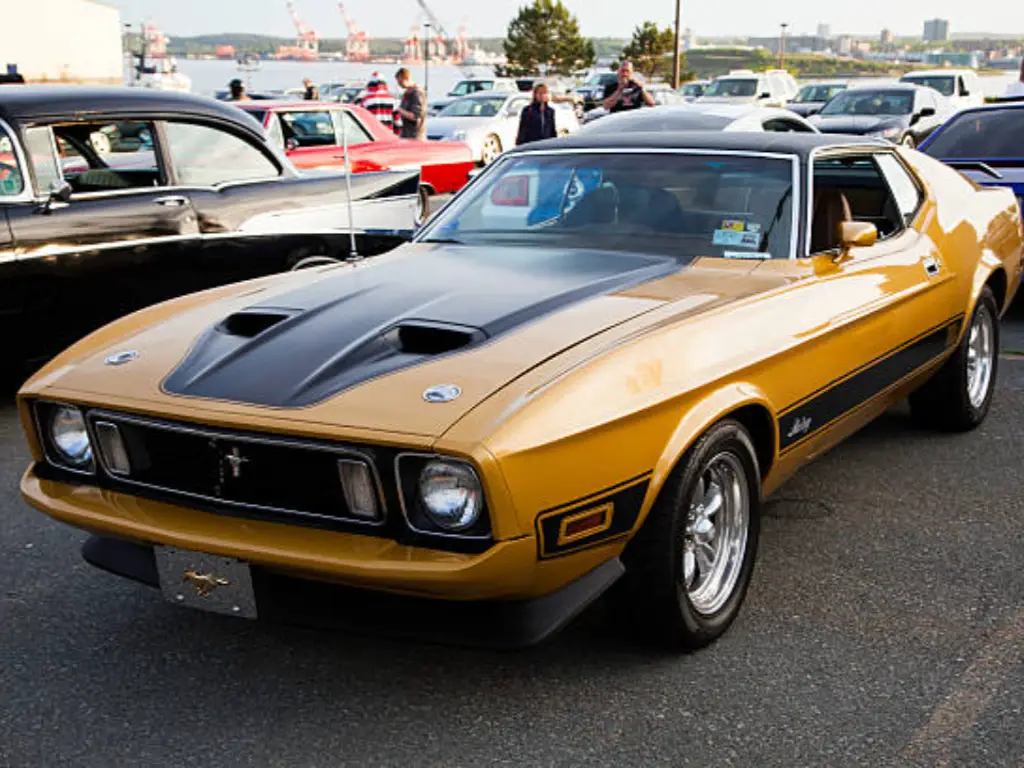
#7 – 1971 Ford Mustang Mach 1
The last of the titans was found in 1971 in the Mustang Mach 1. As the muscular era grew weaker owing to the rising insurance and the looming emission laws, Ford injected one last roar into its pony car. There was the largest ever Mustang, the 71 Mustang- with its dramatic styling and long sweeping hood to house the mighty 429 Super Cobra Jet V8.
The Mach 1 package and 429 SCJ Drag Pack were the top-level performance variants. Its engine had a power of 375 horsepower, which provided excellent torque that was capable of tearing tires apart. The hood had two NACA ducts that were used to channel cool air to the engine.
It may have lacked the maneuverability of its predecessors, but the 1971 Mach 1 was one last, roaring demonstration of rip-snorting performance and a bulldog styling installment of full-throated expressionism during the era of big-block power.
#8 – Ford Falcon XB GT 351 (Australian Muscle)
The muscle car ethos did not begin and end in North America. Back in Australia, Ford Australia had an icon of its own in the works: the Falcon XB GT. Having been immortalised as the Pursuit Special in the 1979 film Mad Max, the Falcon GT was a very Australian take on the muscle car concept.
The XB GT was powered by a locally built 351 cu in (5.8L) Cleveland V8 engine, making 350-300 horsepower, and was known to its male owners as a rugged brute. It had violent styling pieces with twin hood scoops, large graphics, and could be selected as a four-door sedan and as a two-door hardtop. The Falcon XB GT showed that a muscle car could not be reduced to strictly a vehicle; rather, a muscle car was an ideology- a V8-powered and performance-driven ideology that could be modified and celebrated in any corner of the world.
| Model | Engine (Cubic Inches) | Advertised HP | Defining Trait | Rarity (Approx. Production) |
| 1964 Fairlane Thunderbolt | 427 “High Riser” V8 | 425 | Factory-Built Drag Racer | Extremely Rare (~100 units) |
| 1965 Shelby GT350 | 289 “K-Code” V8 | 306 | Track-Ready Precision | Very Rare (562 units) |
| 1968 Mustang GT “Bullitt” | 390 “FE” V8 | 325 | Cinematic & Cultural Icon | Widely Produced (as GT) |
| 1969 Mustang Boss 429 | 429 “Semi-Hemi” V8 | 375 | NASCAR Homologation Special | Extremely Rare (859 units in ’69) |
| 1969 Cougar Eliminator | 428 Cobra Jet V8 | 335 | Luxury Meets Raw Power | Rare (~2,250 Eliminators) |
| 1970 Torino Cobra | 429 Super Cobra Jet V8 | 375 | Peak Big-Block Performance | Uncommon (~7,675 Cobras) |
| 1971 Mustang Mach 1 | 429 Super Cobra Jet V8 | 375 | End of an Era Styling | Rare (with 429 SCJ engine) |
| Ford Falcon XB GT 351 | 351 “Cleveland” V8 | 300 | Australian “Mad Max” Legend | Uncommon (~2,900 units) |
Keeping the Legend Alive: The Challenge of Authenticity and Performance
It is one thing to read about these legends, and quite another to own, restore, and drive one. It is a long and difficult road to the enthusiast who wants to preserve these amazing machines, but it comes with a great feeling of reward.
Over 50 years of ownership, it takes passion, knowledge, and most importantly, the right parts to keep these icons of steel and thunder running in top condition. Finding replacements that easily fit, are finished, and last at least as long as the original parts on classic Ford muscle cars is the one giant leap in any restoration project. Original new old stock (NOS) parts are incredibly rare, difficult, and expensive to obtain. The market is full of poor quality reproductions that need extensive modification and use up time, and impair the integrity of the restoration.
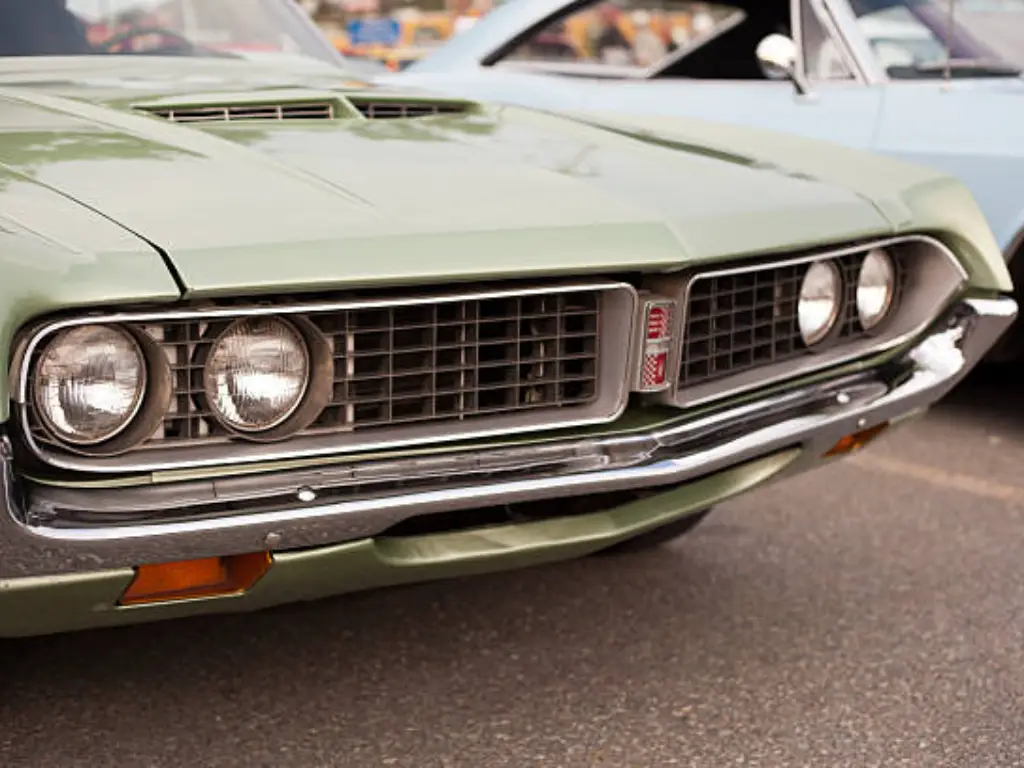
Sunway Autoparts: Your Partner in Perfect Restoration
This is an issue that we here at Sunway Autoparts have learned all too well since we launched in the year 2007. Being a specialist manufacturer of classic American muscle, we have gathered experience in some of the very icons this article celebrates. We recall the photo-finish hunt to find the show-level chrome bumper of a Fairlane or a well-aligned fender of a Mustang. To such idolized Fords as these, close enough, is a trade-off to the disservice of the Legacies.
That is why we use modern precision manufacturing, such as 3D scanning and CNC machining processes, to create components that fit classic Ford vehicles, right out of the box. This is no mere convenience but a view to honouring your time and investment. A section that falls in just reduces your working time and speeds up your project finish, whether you are an expert or a serious fan.
And how about that piece of trim you can never find anywhere to fix on your Mercury Cougar or a particular bracket on your Falcon project? Our strong manufacturing capabilities, worldwide service, and our vast supply chain enable you to accept high-value restorations that would be declined by others. We make-to-order the elusive part and accessories that stall other programs. Don’t think of us only as a classic Ford parts supplier; think of us as your trusted partner in your Ford restoration journey, with each part and accessory that you add to it bearing the quality and authenticity that these remarkable cars demand.
Conclusion
Ford muscle was a short and gloriously bright period in car history. All these eight cars are not mere assemblages of metal, rubber, and glass. They are artifacts of our culture, the reminders of those days when performance was dependent upon the volume of cubic inches in an engine, and the roar of a V8 engine, the musical score of a generation. They are the heritage of creativity, rivalry, and speed chase.
The carrying on of this heritage has now been left to the care of enthusiasts, restorers, and collectors. Saving these icons is not so much about maintaining a machine but more about preserving history, and that usher of thunder of these Fords of legend shall continue to be heard by even future generations.
Frequently Asked Questions About Ford Muscle Cars
Is a Ford Mustang technically a muscle car or a pony car?
That is an old argument. The first-generation 1964/1964 12 months Ford Mustang established a brand new vehicle category: pony cars: smaller, more fashionable, and cheaper, sports coupe targeted a younger audience. By conventional meaning, a muscle car was a mid-sized car (such as a Ford Torino) equipped with a huge-displacement V8.
Nevertheless, the boundaries were much more confused. When Ford fitted the Mustang with big-block engines such as the 390, 428 Cobra Jet, and Boss 429, high-powered Mustangs definitely personified the power and muscle of a muscle car. Thus, it was also the Mustang that invented the pony car segment, but its high-performance models are definitely muscle cars.
What is the rarest Ford muscle car ever made?
Although the Boss 429 and Thunderbolt are perhaps the rarest established production vehicles, it is a one-off prototype that tends to garner the most rare label. One of the leading favorites is the 1967 Shelby GT500 Super Snake. It was a base GT500 equipped with a lightweight, aluminum 427 V8 engine, race-used on the GT40 program, and it made more than 600 horsepower. It was a terrifying performance machine built as an engineering study-demonstration vehicle of Goodyear tires. It was built only once, and thus it became one of the most valuable and sought-after Fords on the planet.

